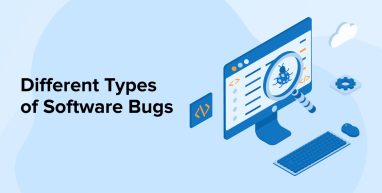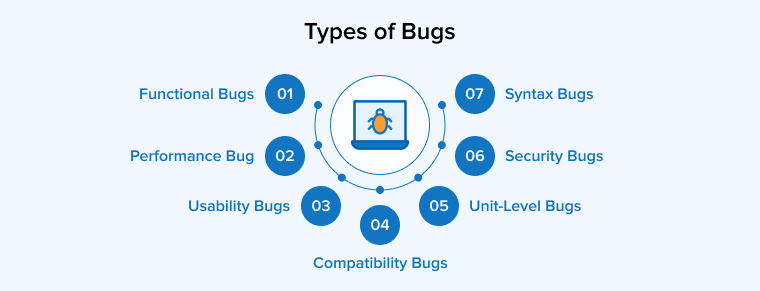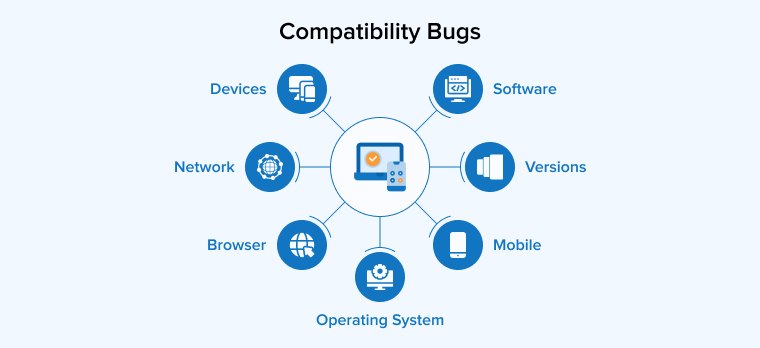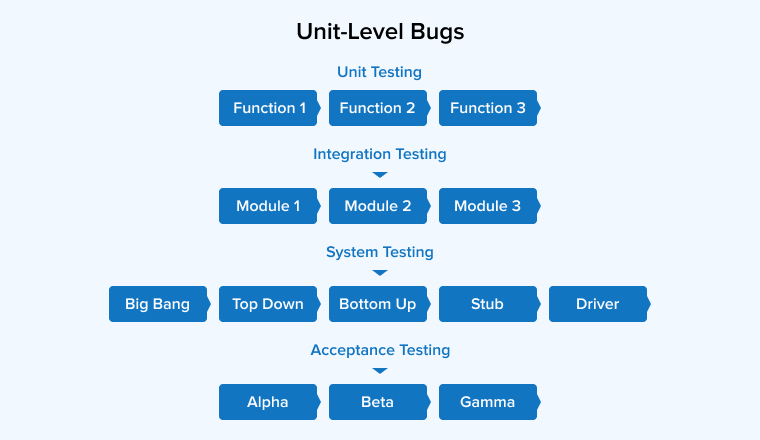
Mistakes are expensive and businesses at different stages realize that they can not take risks of making mistakes. Businesses cannot afford to make mistakes and then correct them in this fast paced world. Most of the time, not analyzing mistakes at the right time will make them pay unnecessarily and irrelevant amounts for their business. In the custom software development industry, bugs are the mistakes that companies make in their development processes. Software bugs are very common and it happens most of the time unintentionally. Hence, you as a business must take care of how to manage bugs from scratch.
From an unclickable button that refuses to save customer’s information or that app which doesn’t have significant security concerns, also there is a block a release or altogether change programme behavior, there’s something for everyone. These programming flaws can cause significant financial losses and harm a company’s reputation.
Whether it’s a common issue or a more major software fault, bugs will occur during the development life cycle of your project, but you don’t have to be afraid of them.This blog is completely dedicated to what software bugs are and all of its major types.
1. What is a Software Bug?
A software bug is an error, flaw, or fault in a software solution. This error causes the software to generate an unintended or unexpected result, such as crashing or generating unwanted results.
Software bugs are very common and sometimes extremely complex for software development companies.
From the following software development needs we can easily deduce that:
- The error is the difference between the proposed plan and intended results.
- Errors can occur as a result of missing or inaccurate requirements, as well as issues with human data entry.
In the software development industry there are different types of software bugs which should be understood to know how to eliminate them. As we know, bugs depend on various factors.
According to NIST how relative cost increases based on it’s discovery time.

2. Different Types of Software Bugs

Shahed Chowdhuri Sr. Technical PM at Microsoft discussed different types of software here in this tweet.

2.1 Functional Bugs
In a broader concept, this form of error happens whenever software doesn’t function as expected.Let’s understand this with an example, if there is an end user who has clicked the “modify” button, but their entered data does not alter changes then, this is a functional issue. Any software tester may uncover a more precise cause of the issue and classify it in the category of functionality error after further examination. Functionality errors are a broad category of errors. In simple terms, a functional bug is a component in an app or website that does not work as it has planned to. Here quora user artyom described functionality bugs in very lucid manner.

When software testers undertake complete functional testing for their apps or websites in real-world scenarios, such vulnerabilities are frequently discovered. To prevent delivering poor user experiences in the production environment, testing teams must guarantee that all functional bugs are handled early on. These testers are known as functional testers and they perform functionality testing inside out based on the functional aspects. This gives wholesome results when tested before delivering each sprint.
2.2 Performance Bugs
As per the name,this bug affects the performance of the whole application. Performance flaws are related to the speed, stability, reaction time, and resource consumption of software. During the performance testing phase of the software development process, this type of bug is detected. Performance flaws are one of the most common software bugs, and they include software that operates slower than it should or has a response time that is too long for the project’s needs.
Performance issues are connected to software’s speed, stability, response time, and resource usage. A performance error occurs when a system’s reaction time is X times longer than the requirements specify.
2.3 Usability Bugs
The user experience of any application is one of the promising factors behind the success of an application. But the usability is always under question. Usability defects are present when a software application is inconvenient to operate or negatively impacts the user experience. Some examples of poor usability are indicated when a user finds it difficult to navigate about a website or app and also it can be an erroneous process of sign up.
Usability testing is used to get rid of these kinds of software flaws. Software testers should check software usability specifications and web content accessibility guidelines during usability testing.
This tweet will show how a great software product sometimes becomes ordinary due to usability bugs.
Notebook by @zoho is an example of software with a great potential, ridden with unnecessary usability bugs. #ux #usability @zohonotebook
— Henning von Vogelsang (@core) June 22, 2017
2.4 Compatibility Bugs
While running an application on different devices or operating systems, you need to test when a program does not run consistently across different types of hardware, operating systems, browser compatibility, or when executing with specific software under formal specifications, compatibility defects occur. The compatibility errors may not be necessarily detected during the regular software testing. Hence compatibility testing is required to be performed in order to detect these types of software flaws. Such types of compatibility flaws in software include font size, color, or alignment concerns. In one web browser, the font may look perfect, but in another, it may be the wrong size.

Once you perform compatibility tests, all the issues revolving around the version, device set and other issues will be solved. Compatibility tests are usually performed at the end and it compares the integration with different devices.
2.5 Unit-Level Bugs
This type of testing is done from the start. The unit-level software bugs are yet another common sort of bug you’ll see in every application. It is not defined by a single type but all different bugs are included in unit testing. After your product/ application is coded, you must test it using unit testing, which entails taking a tiny, logical part of code and ensuring that it runs as intended.

Agile teams and other software developers often undertake unit testing once your program has been created. Various unit-level defects such as state-machine problems, calculation errors, and fundamental logic bugs are frequently discovered here.
2.6 Security Bugs
“Cannot trust your app”. What if a customer slams you with this opinion for your developed app that it is not secure? What if your app unintentionally captured all the personal details of your consumers? No consumer will like that or take any kind of information breach. Hence, this comes as a priority for businesses to ensure that there are no security defects. Therefore, your application’s security is the most important feature. Illegal hacking should not be used to break into your security system. Security testing is one method of determining whether your website is safe or not. Security errors are flaws in software that allow hackers to gain unauthorized access or control of a computer system. User authentication, access authorisation, data integrity, and confidentiality may all be compromised in the course of such security breaches.
Non-conformance with software requirements or error in understanding the requirements are the other two most common sources of security issues.
2.7 Syntax Bugs
This is definitely an unintentional error.. This usually occurs because of human negligence . These types of errors appear in the source code of programs. One of the most prevalent software defects is syntax errors, which prevent your application from being compiled. When your code is missing or contains improper characters, this type of problem occurs. This software flaw will have occured because of spelling errors in the command, a missing bracket, any typing errors or anything like this. The use of compilation programs will often alert your development team to these issues.

3. Conclusion
To sum up this discussion on types of software bugs, we would say that bugs are part of the process but then you must ensure that eliminating bugs should also be a vital part of the same process. If you are a business willing to develop a full-fledged performing secure application, make sure testing of applications is in place. The main objective of software quality assurance is to identify critical bugs and fix them. With an inclusive team of software developers, you can take advantage of their skills to detect bugs at an early stage, resolve them and avoid the phase of reworking lately.






If you have any doubt about software bugs this article can be very valuable for you. It clears all my doubts about software bugs and their different types. Language of this article is very easy and comprehensible.
During development of any software product we are bound to come across error messages and other development roadblocks. Hence, It is necessary that we must know about different software bugs. It is important to resolve programming errors that can result in serious financial losses and seriously damage a company’s reputation.
As we know software bugs are an inevitable part of the software life cycle. Here you will learn that creating a robust software product requires comprehensive testing and optimizations. This article discusses the different types of bugs in software development and how they can be classified and why they need to be organized.